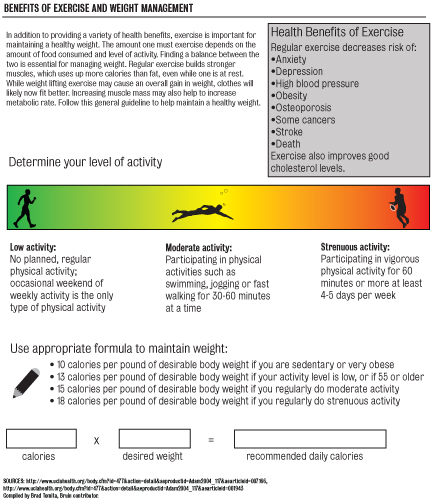If you are hoping crunches will help you shed holiday season-induced body fat, chances are you’re out of luck.
To address those who believe that spot reduction ““ the idea that one can reduce fat in specific areas of the body through targeted exercise ““ works, Christian Roberts has some advice.
“They’re wasting their time. They’re far better off within a generalized program that activates a large amount of muscle, reasonably high intensity, to basically cause an adaptation of loss of whole body fat,” said Roberts, an adjunct assistant professor in the physiological science department.
Some studies and evolution-based ideas contest the truthfulness of spot reduction claims.
UCLA professionals agree that spot reducing provides no results. Instead, exercise, healthy dieting and loss of whole body fat can effectively contribute to weight loss.
“You can only lose weight in the places where your body will allow you to lose weight,” said Dr. David Heber, professor of medicine and public health and director of the UCLA Center for Human Nutrition.
Depending on our basic body shapes, most people lose weight first in their upper body and then their lower body, added Heber, who believes spot reduction is a myth.
For women, their lower body fat is maintained by female hormones like estrogen, which therefore makes it more difficult to lose fat in these areas. Luckily, Heber said, most health risks are in upper body fat, and lower body fat is healthier.
Roberts said that spot lipolysis occurs in our bodies, which means that fat is broken down more in an area where a muscle is being trained, but the fat loss in that area will not necessarily be greater.
Using professional cyclists and sprinters as an example, these athletes appear to be leaner in the lower parts of their bodies than in the upper parts. However, they have consistent leanness throughout their bodies, providing further evidence against spot reduction, Roberts added.
The possible biological phenomena that prevents spot reduction from occurring may be attributed to human adaptations.
“Our basic bodies are developed to hang onto fat because for most of mankind’s existence on earth, there hasn’t been enough food to eat. So as a result, we don’t really have genes to get rid of fat in our bodies,” Heber said. “We have to do it through diet and exercise, and when you do that, you always lose the fat in a certain way related to how you are adapted to starvation.”
Roberts shared similar sentiments.
“From an evolutionary perspective, I can’t really think of any rationale why a person 50,000 years ago would need to reduce fat in a specific part of their body in order for them to help with survival other than the genetic underpinnings that are already established,” Roberts said.
An example of these established features includes male and female body fat pattern differences to bear a child, he added.
Hula-hoop instructor Pamela Randolph stands by the idea that individuals can improve their bodies through healthy exercise.
“I don’t believe that you can get rid of fat in a certain area, but I do believe you can change your size and the tone of a certain area by burning fat overall,” said Randolph, a certified personal trainer who created the Oohlala Hoolala workout program. If you want to change a certain area, you must target the specific muscles related to the area you’re working on, she added.
Randolph, who also created the Hula-hoop workout at the John Wooden Center, said that science has shown that continual abdominal contraction burns significant calories and can aid in fat burning, and as a result, Hula-hooping would be an example of a beneficial workout.
Proper functioning movement starts from the core of the body, and once in neutral spine, everything else done is more effectively because one is able to use the correct muscles, Randolph said.
Exercise and diet will help individuals lose fat, but particular pockets of fat usually do not go away with a diet alone, Heber said.
Nevertheless, Heber said that individuals can build muscles in specific areas of their body through strength training.
Depending on the goals of an exercise training, a healthy exercise regimen incorporates resistance training, weight training, flexibility and intervals with less focus on steady-state exercise, Roberts said.
